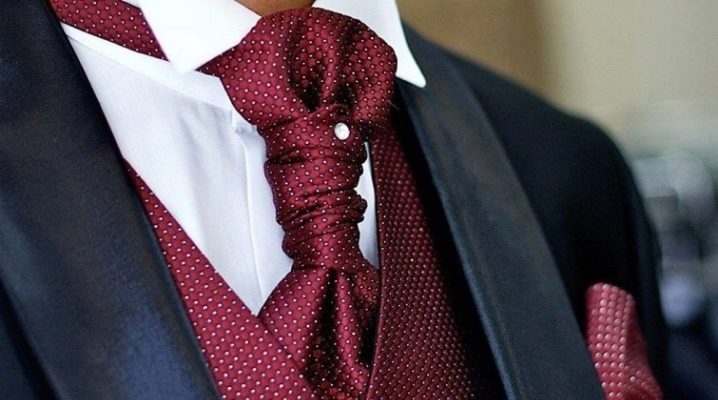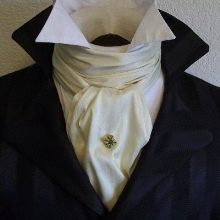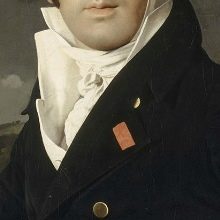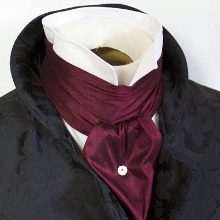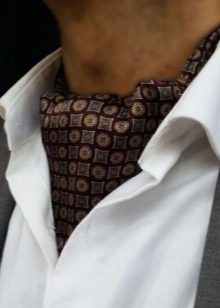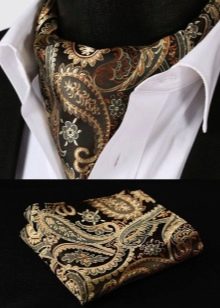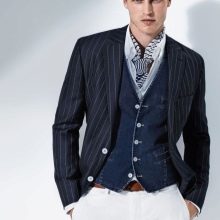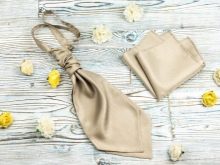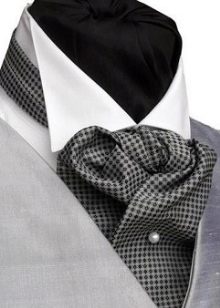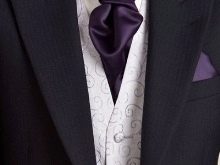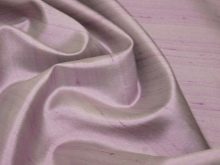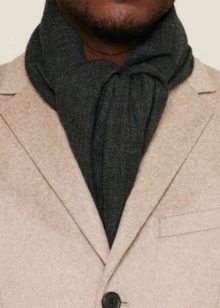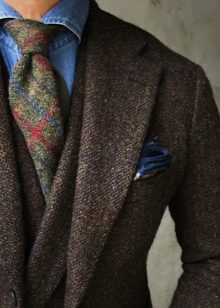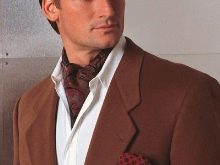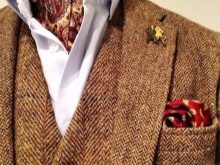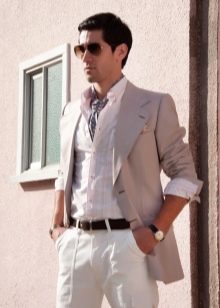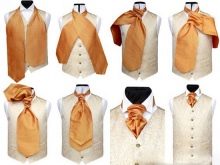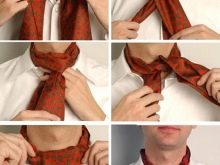Ascot tie: what is it and how to tie it?
Among men's accessories, the ascot tie stands out. What it is, and how to tie it, we will consider in the article.
History
The ascot tie first appeared as a fashion accessory in Eastern Europe in the 17th century. It was a scarf-like piece of fabric that men would wrap around their necks for added style and warmth.
Having gained wide popularity in Western culture in the 18th century, this tie has become an iconic symbol of the aristocratic class... Later, it spread to other countries of the European continent. Today, such an accessory is quite informal, but it attracts attention and complements any image.
Ascot gets its name from a horse racing called Royal ascot - an exclusive event for which men had to wear a similar scarf in combination with a tailcoat jacket.
Today, the ascot tie is much less common and is usually worn during very formal daytime events and formal weddings.
How to choose and what to combine with?
Ascot needs to stand out in a look, which is why patterned scarves are now gaining great popularity among the male population who seek to follow fashion and wish to add a sophisticated sparkle to their personal attire. The look should match the individual style that uses the ascot tie as a statement. Every color, print or pattern can add color to a seemingly dull gray, desaturated look.
The ascot tie goes well with casual clothes. For example, choose any shirt in a solid color that can be paired with a polo coat. Stylists recommend not to use outerwear colors that will correlate with the color of the scarf. Unbutton a few buttons or buttons to allow yourself the freedom to tuck the ascot into your shirt.
Dark brown jeans or trousers are perfect for an ascot tie look. To look even more casual, you can wear a slightly faded jeans in a dark tone or shade. For evening events, wear black, brown, or gray dress shoes. For daytime, choose a more casual look with a pair of topsiders to complete the look, but make sure the tie and shoes aren't exactly the same color first.
In addition to the classic ascot tie, a plastron can also be used - this is a large tie that covers the neck and most of the chest... The model has wide, sharp edges and a narrower middle, which is hidden under the shirt collar. Plastron is made of light or dense silk, usually black, white, gray, red and other colors.
Materials (edit)
Ascot ties are not only made from silk, although it has always been and is the most popular fabric to use. The classic materials for this accessory are described below.
- The classic ascot is made of silk... These accessories are often quite expensive.
- Shantung Is a material that comes from the Chinese province of Shandong. It is similar to the rough silk that is often used for wedding dresses.
- Wool ties there are actually two aesthetic styles: one is a relatively inexpensive English country-style wool tie, the other is a narrower, thinner cashmere tie. The former is great for fall combinations as its cut matches well with outerwear for this time of year.
- Cotton Ties - perfect neck solution in warm weather. Generally lightweight and sleek, they are a pretty elegant option to wear with khaki and striped suits.
- Linen ties although somewhat unusual, they are also good for warm weather, but tend to be highly textured and rough to the touch.
How to tie?
Ascot is a type of tie that looks like a cross between a silk scarf and a classic tie. Follow the instructions below to learn how to tie an ascot tie.
- Wrap the ascot around your neck under the collar. Make sure it touches your skin directly. The two open ends should rest on your chest. Some ties are made with a pre-sewn buttonhole on one side. When using this, you just need to pass the long end through the loop and go to step number 4, if not, then you must continue to follow the subsequent steps. Please note that if the shirt is with buttons, then you need to unbutton at least the top one.
- Pull out one end about 15 cm lower than the other.
- Lay the long end over the short... If you want a tighter, more stable knot, wrap the long end around the short end two times.
- Tuck the long end under the short end at the base of the neck... Make sure the knots are not too tight.
- Pull out the long end and straighten it.
- Move the tie so that the long end is directly over the short end... The ascot should be positioned right in the center of the chest like a normal tie. The two ends should be about the same length.
- If an ascot was used with a pre-sewn loop, then there will be only one end (tail) on the chest.
- Straighten and smooth the folds with your fingers, formed at the base of the neck on the fabric.
- Add a decorative pin in the middle of the knot, if you want the node to be more reliable.
- Tuck both ends (or one) into the vest. If you do not wear a vest, you must tuck the ascot into any outerwear with a V-neck, for example, a jacket.
These small accents and accessories define individuality, emphasizing personal style.
